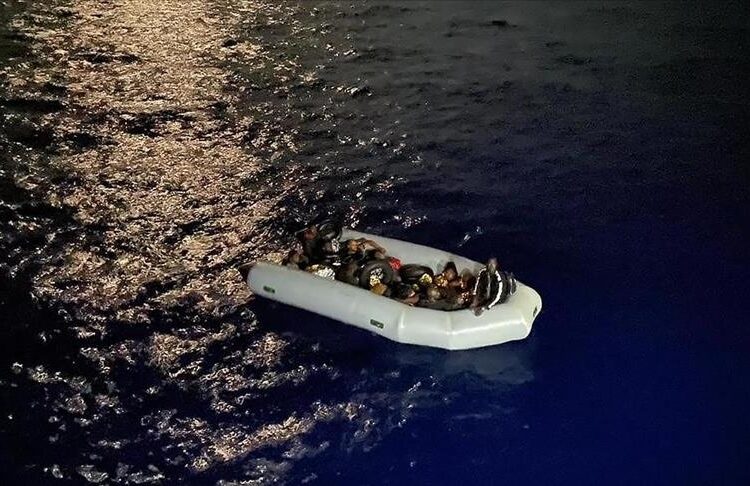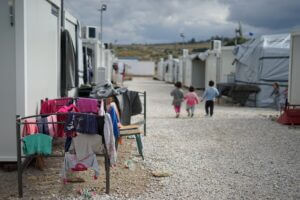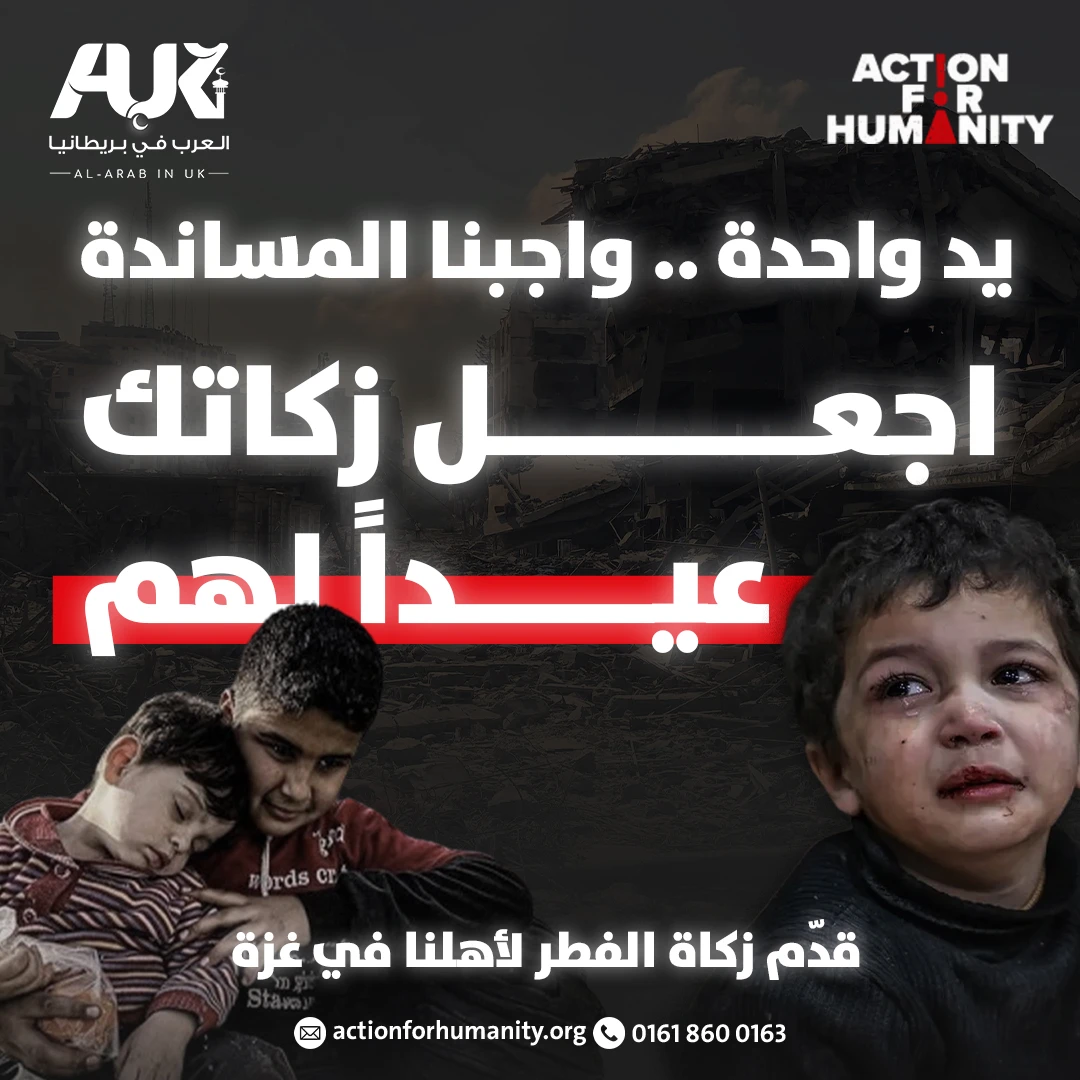Immigration and asylum crisis humanitarian or political file?

Immigration and asylum crisis humanitarian or political file? (Source: Anadolu Agency)
The crisis of displacement and immigration occupies the pinnacle of international crises, and it is not an exaggeration to call it the crisis of the century, since World War II, more immigrants than ever before live in a country other than the country in which they were born. Immigration and asylum crisis humanitarian or political file?
In an article published on “Independent Arabia” website, Sawsan Mhanna said that the whole world faces many challenges, to address the crises caused primarily by the crisis of displacement and immigration, most notably the lack of international aid, as millions around the world seek to escape poverty, wars and instability to countries they consider stable and capable of securing a better future for them.
According to the Global Migration Report 2020 issued by the International Organization for Migration, based on statistics from June 2019, the number of international immigrants was estimated at 272 million, an increase of 51 million from 2010. Almost a third of them were immigrant workers.
International immigrants constituted 3.5% of the world’s population in 2019. This is compared to 2.8% in 2000 and 2.3% in 1980. These crises worry the international community, and that is why the leaders of the 193 member states of the United Nations convened, in November 2016 in New York, the first summit to discuss the most serious immigration crisis since World War II.
The number of refugees and forcibly displaced
The United Nations High Commissioner for Refugees (UNHCR) had announced in its annual Global Trends Report issued in June 2021 that the number of forcibly displaced people around the world exceeded 82.4 million people by the end of 2020 as a result of persecution or war and conflict, of whom 26.4 million are refugees, about half of whom are under the age of eighteen Age.
Developing countries host 86% of the world’s refugees, while 73 percent of refugees live in countries neighboring their countries, which is the highest number recorded by the UNHCR in its history.
In contrast, 20.4 million refugees live under the mandate of UNHCR, 5.6 million Palestinian refugees under the mandate of UNRWA, 45.7 million internally displaced persons, 4.2 million asylum seekers, and 3.6 million Venezuelans are displaced abroad. (https://www.nuestra-gente.com) Millions of people are stateless, denied access to it and to basic rights such as education, health care, employment and freedom of movement.
In the 1990s, approximately 1.5 million refugees were able to return home each year. Over the past decade, that number has decreased to about 385,000.
The countries that attract the most refugees
Low- and middle-income countries host 86% of the world’s refugees. Turkey hosts 3.7 million refugees, the largest number of any country in the world, followed by Colombia, Pakistan, Uganda and Germany, each hosting more than a million people. Over the past few years, the area stretching between Libya and Italy in the Mediterranean has turned into an increasingly dangerous corridor with its use by refugees and immigrants for economic motives; In pursuit of a desperate dream of a better or safer future in Europe.

Migration is a political or humanitarian file?
The immigrant crisis in Europe, also known as the refugee crisis, began in 2015 with the arrival of a large number of people to the European Union via the Mediterranean, or overland through southeastern Europe after the asylum crisis in Turkey.
Those waves of immigration began in the mid-20th century and were faced by many European countries. But initially, those waves witnessed a huge solidarity movement with immigrants from citizens of European countries, and International organizations, local initiatives and government plans were placed at the disposal of the bodies that were working at the time to absorb the waves of migration, to secure relatively decent living conditions for these immigrants.
However, with the political and demographic changes that the world witnessed later on, it transformed the refugee issue from a humanitarian file into a means of political pressure in the hands of some countries. Some of them are preventing migrants from reaching them, often by proposing inhumane laws.
For example, Italy passed some laws that prevent rescue ships from docking in its ports. In Britain, her government proposed laws to prevent immigrants from coming to the country, which was considered racist, and among the proposals was the detention of immigrants on an island under British control in the South Atlantic Ocean, which is closer to Cape Town or Rio de Janeiro than to London.
But if we look at the statistics that indicate that one in seven of those living in Britain today were born abroad, we find that these suggestions express real concerns for European countries.
It is the birthplace of about three million immigrants, about a third of the total, from countries in the Commonwealth of Nations such as India, Jamaica, Australia and Nigeria.
French Interior Minister Gerald Darmannan called on Britain to open its doors to “legal immigration” and assume “its responsibilities”, the day after a European meeting, from which London was excluded, in Calais, northern France, over the immigration file, last November, days after the tragedy of the drowning of 27 immigrants in the Channel.
Migrants try to reach the British coast almost daily on boats across the Channel, while the number of crossings has increased since 2018 as a result of tighter controls on the port of Calais and the tunnel linking the two banks of the channel.
According to figures published by UNHCR on its website, a total of 2,262 migrants “died or were considered missing” while trying to cross the Mediterranean in 2018, compared to 3,139 in 2017, and 3,800 in 2016.
1,589 died or went missing in the Mediterranean Sea in 2021, a 26% increase from 2020, UNHCR reportshttps://t.co/6VXC6PQQjX #HumanRights #Refugees #RefugeesWelcome #EU #Immigration #immigrationmatters
— Glen Plant #FBPE (@GlenPlant1) December 23, 2021
This raises widespread controversy on the European internal political scene, especially after the emergence of extreme right-wing parties, which began to appear strongly on the ground. In Sweden, for example, the “Swedish Democrats” party, which is known for keeping pace with neo-Nazi ideas, managed to rise to the political scene and had the opportunity to participate in the prospective government, and the rhetoric of “anti-immigration” played a prominent role in the success of that party, at last.
Mediterranean “Great Cemetery”
From here, Pope Francis devoted his tour, which began on Thursday, December 2, to Cyprus and Greece, to focus on the two issues of dialogue between Christian denominations, the migrant crisis, and the issue of refugees and their reception.
He expressed this upon his arrival in Greece by saying that Europe is “torn by national selfishness” over its management of the migration crisis, and that the European community “continues to procrastinate” and “apparently suffers at times from impotence and lack of coordination” instead of being an “engine of solidarity” in Immigration issue.
The Pope called for a return to “good politics”. In a video message published by the Vatican, days before the start of his tour, he described the Mediterranean as turning into a “great cemetery”, referring to the thousands of migrants who drowned while trying to escape from conflicts and wars in their countries in the Middle East to a safe haven in Europe.
In his message on the occasion of the seventieth anniversary of the founding of the International Organization for Migration, last November, he says, “Migration is not only a story of immigrants, it is a story of inequality, despair, environmental degradation, and climate change, but also a story of dreams, courage, and studies abroad, inclusion of the family, new opportunities, safety and security, hard but decent work.”
Death boats
Perhaps the message of an Arab immigrant who was swallowed by the sea in one of the boats called “the boats of death”, without knowing his identity, tells the story of thousands of immigrants who fled the hell of war in Syria, Iraq and Libya, or poverty and unemployment in most Arab and African countries.
In it, he says, “Do not be sad, my mother, if they do not find my body. What will benefit you now except the costs of transportation, shipping, burial and consolation… My dreams were not as big as others, all my dreams were the size of a box of colon medicine for you, and the price of repairing your teeth.”
United Nations reports indicate the growth in the number of international immigrants over the past two decades, as the number of people living outside their countries of origin reached 281 million in 2020, up from 173 million in 2000 and 221 million in 2010.
International immigrants currently represent about 3.6% of the world’s population, but the Arab countries constitute a large area for this phenomenon, while the European Union is the main destination for Arab migration.
Pictures of the child Aylan, whose lifeless body was tossed ashore by the sea waves, will remain evidence of the failure of developed countries to help thousands of refugees. The child, Aylan, was among a group of Syrian immigrants who drowned when a boat carrying them from Bodrum, Turkey, to the Greek island “Kos”. Among the dead were his five-year-old brother, and his 28-year-old mother, while his father survived.

Syrian alienation
However, the most prominent Syrian scene remains with the wave of asylum that swept its people after the Syrian war, in the largest alienation after the Palestinian alienation.
The expression of an elderly woman who spoke to the media summarizes the suffering of an entire people, “The eldest son sought refuge in Germany, while the middle son is in Austria, while the youngest is waiting in Turkey. Between the middle and the youngest, she lost two in the war and the third is missing. As for the girls, they settled with their husbands in the “scattered camps” on the borders in Lebanon and Jordan, as there is no country in the world where a Syrian refugee has not gone.
United Nations figures indicate that more than half of the Syrian people have become refugees in different countries of the world, or displaced within their own country, in the largest displacement crisis around the world, with more than 6.7 million Syrians displaced within the country; Turkey, Lebanon, Jordan, Iraq and Egypt host about 5.5 million refugees, hundreds of thousands spread across 130 countries, and 70% of these refugees suffer from extreme poverty, without access to food, water, and basic services.
ShortURL ⬇








